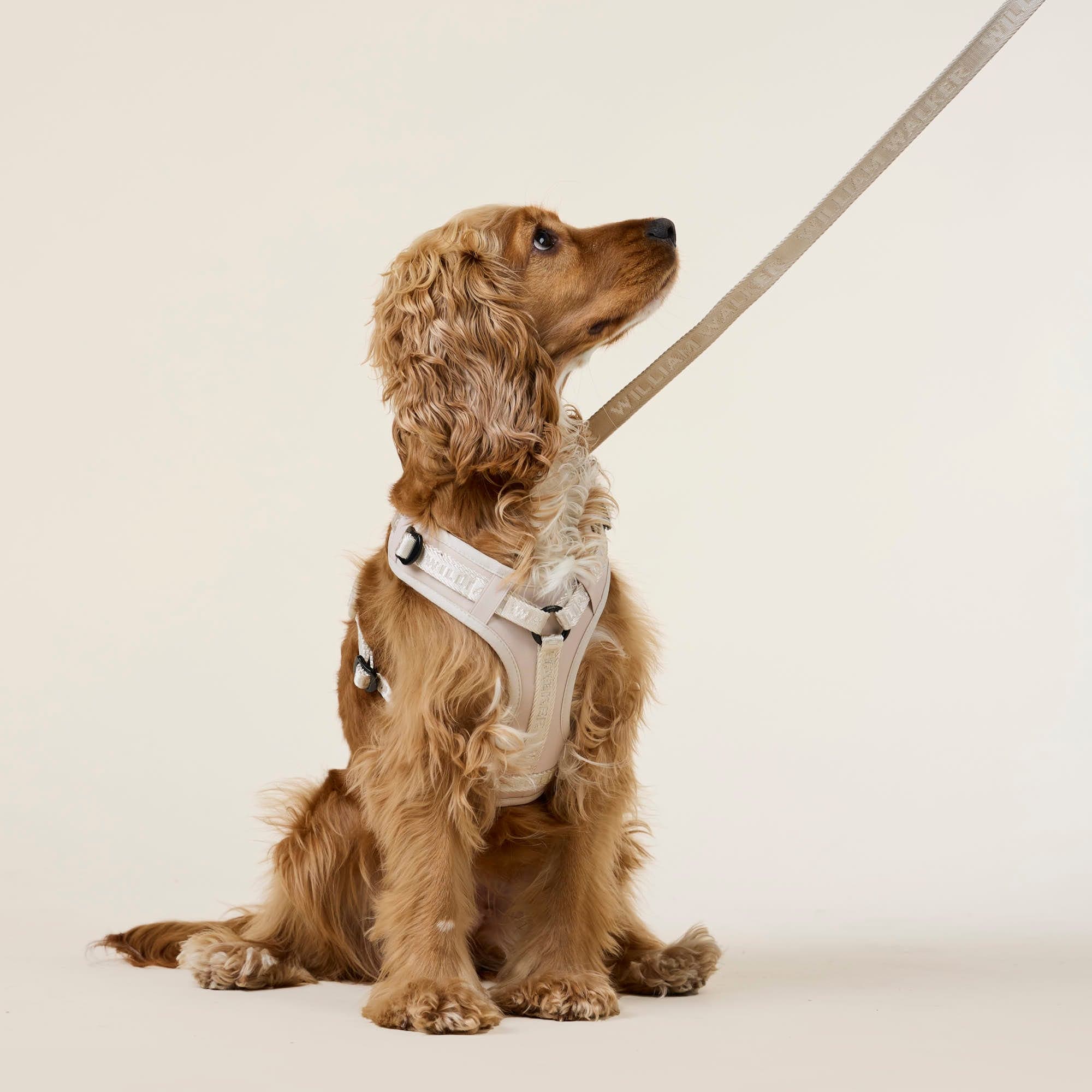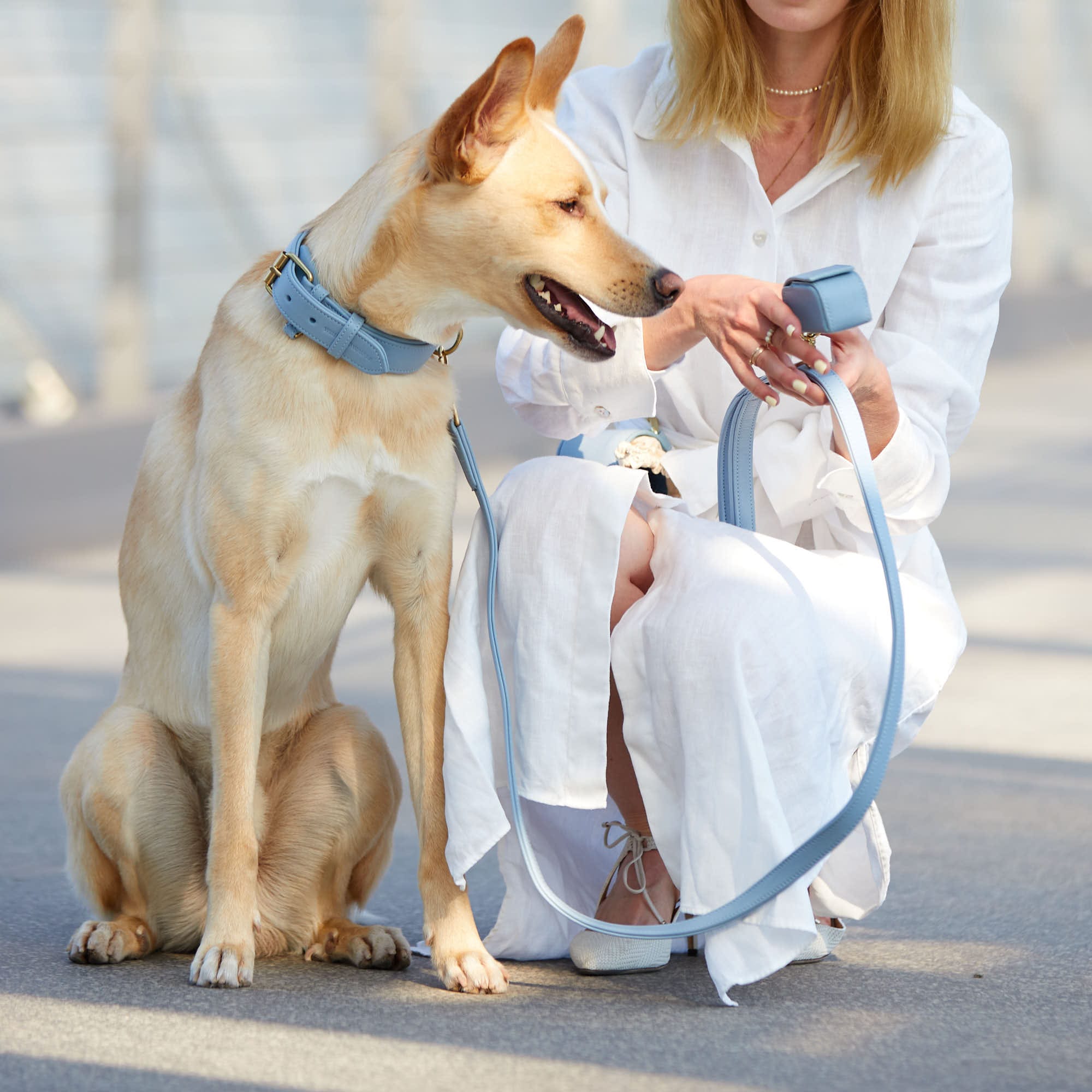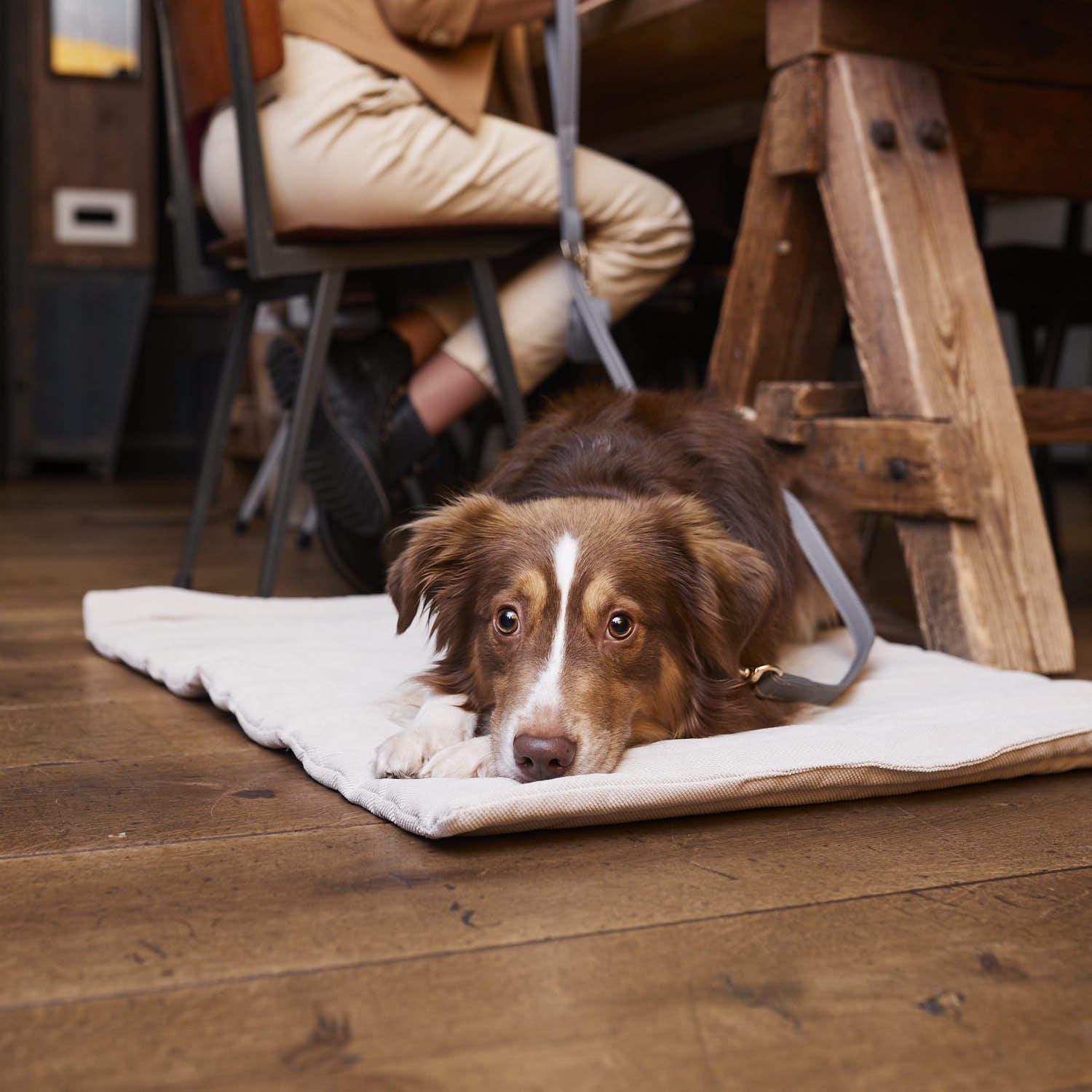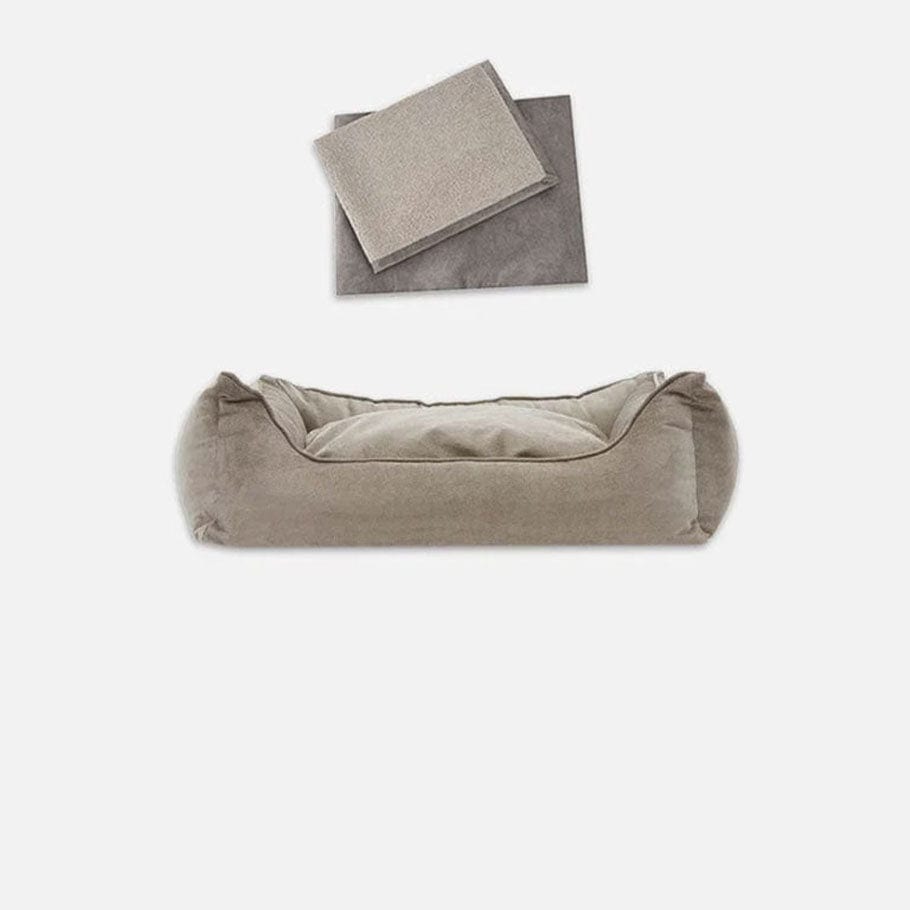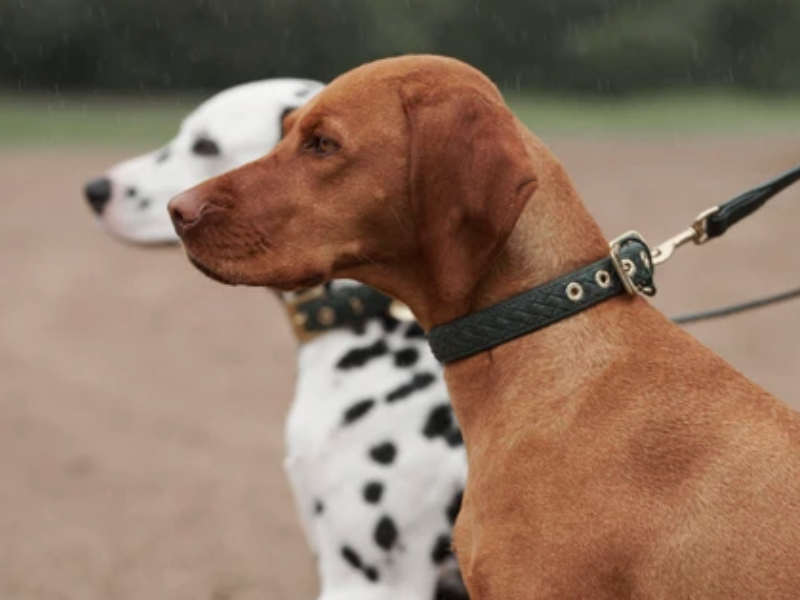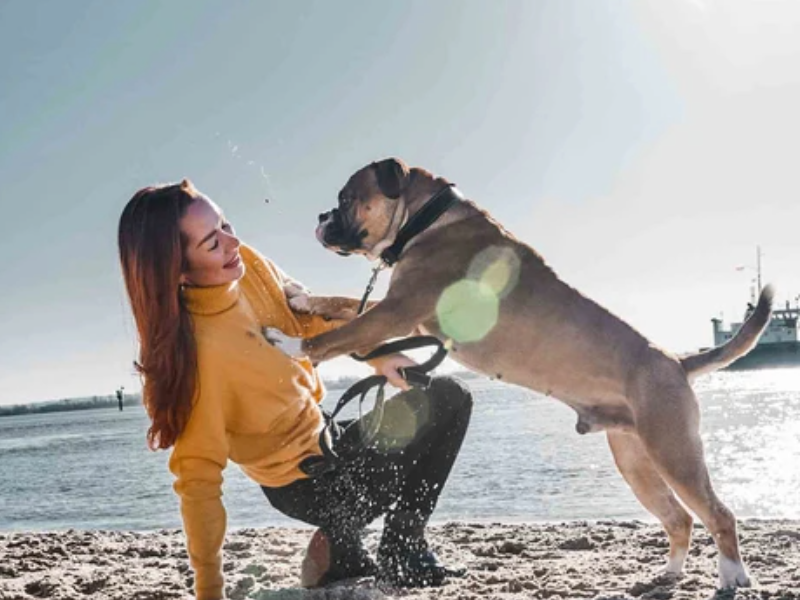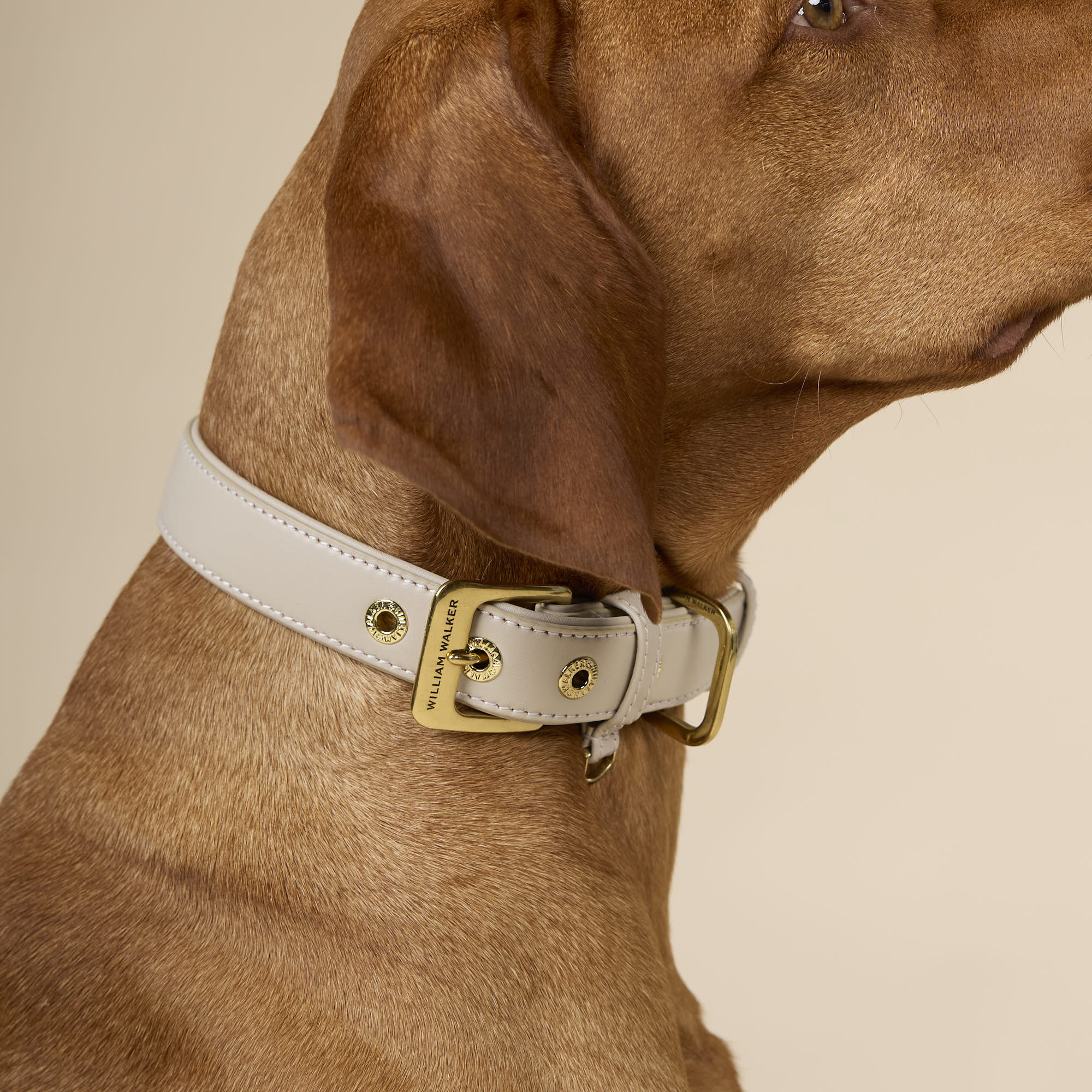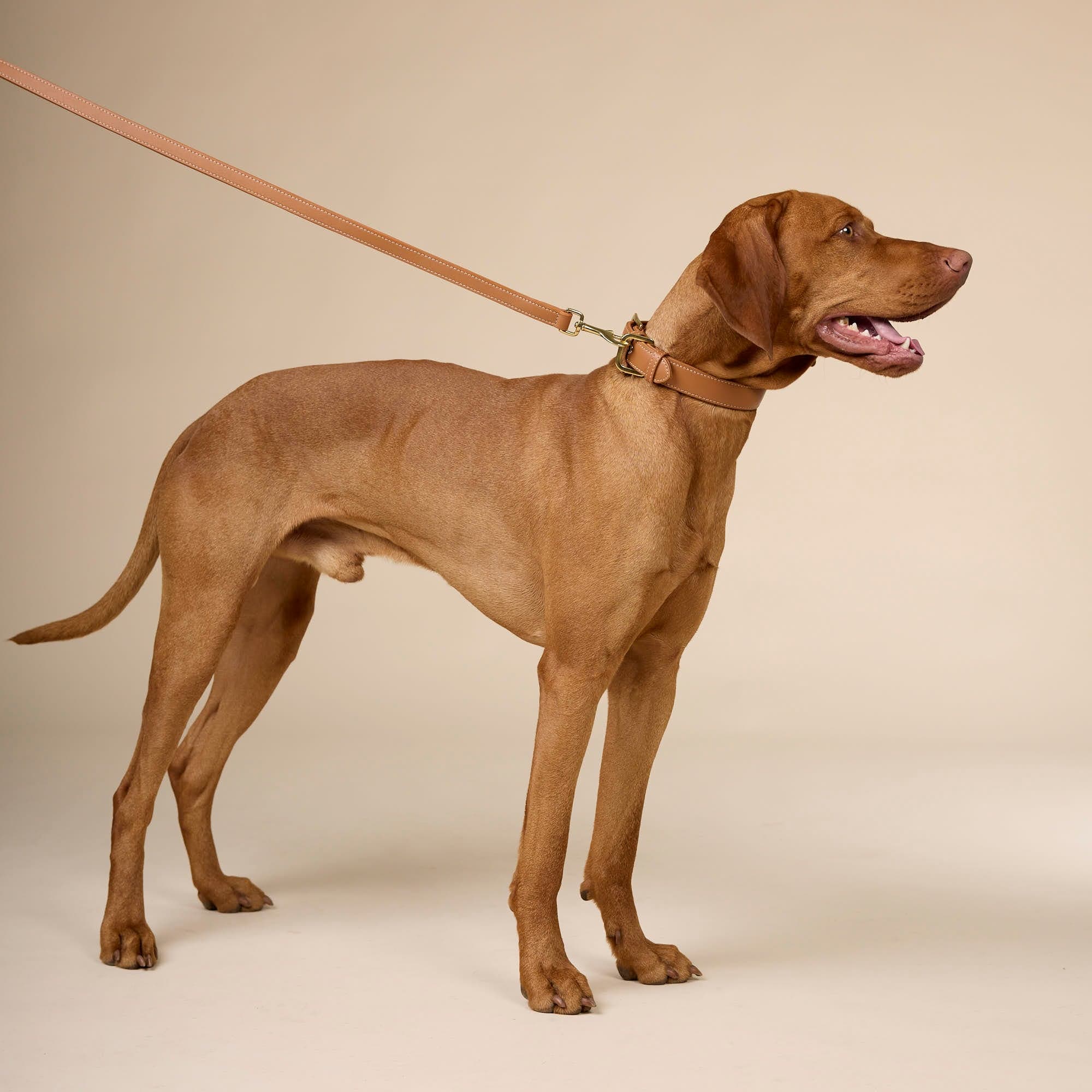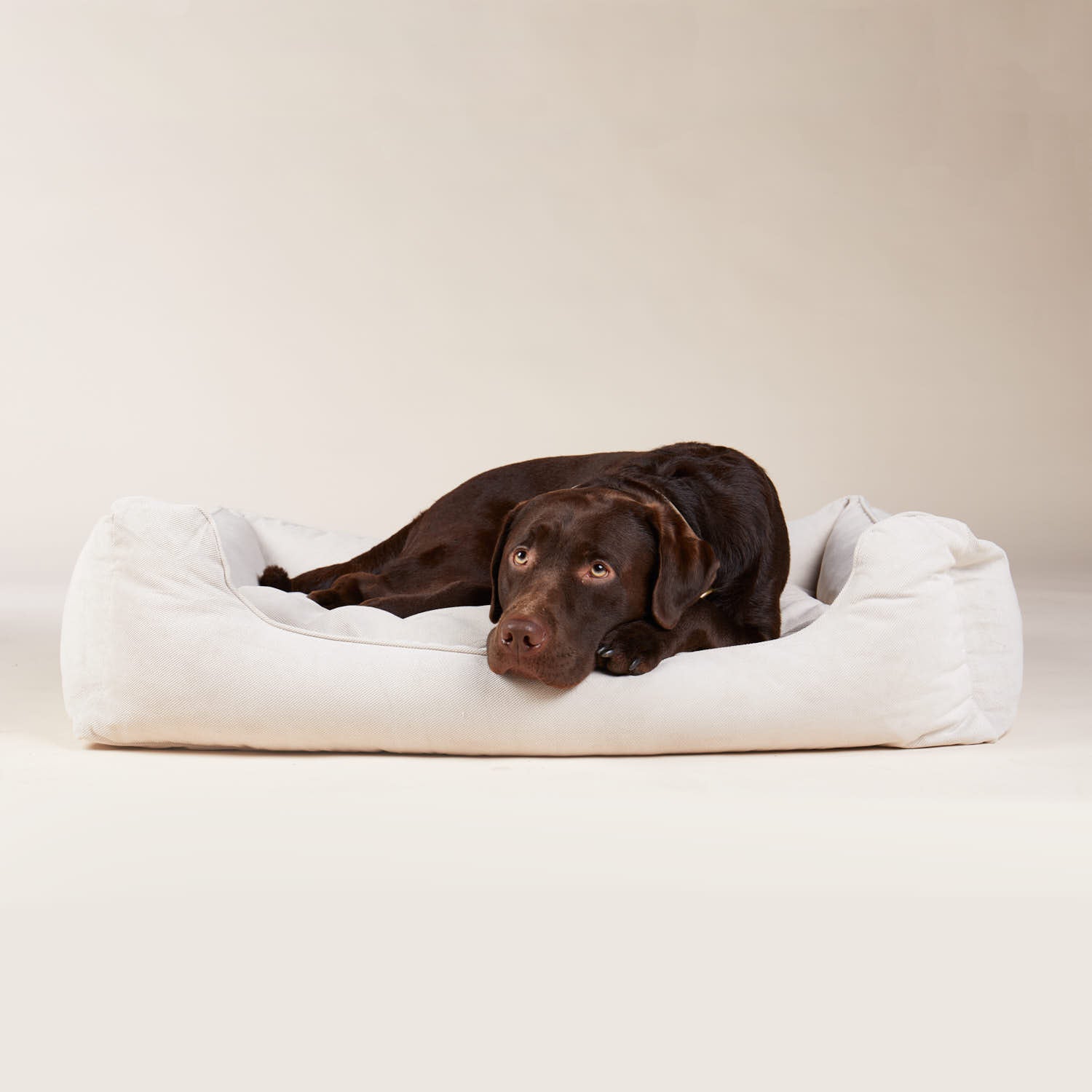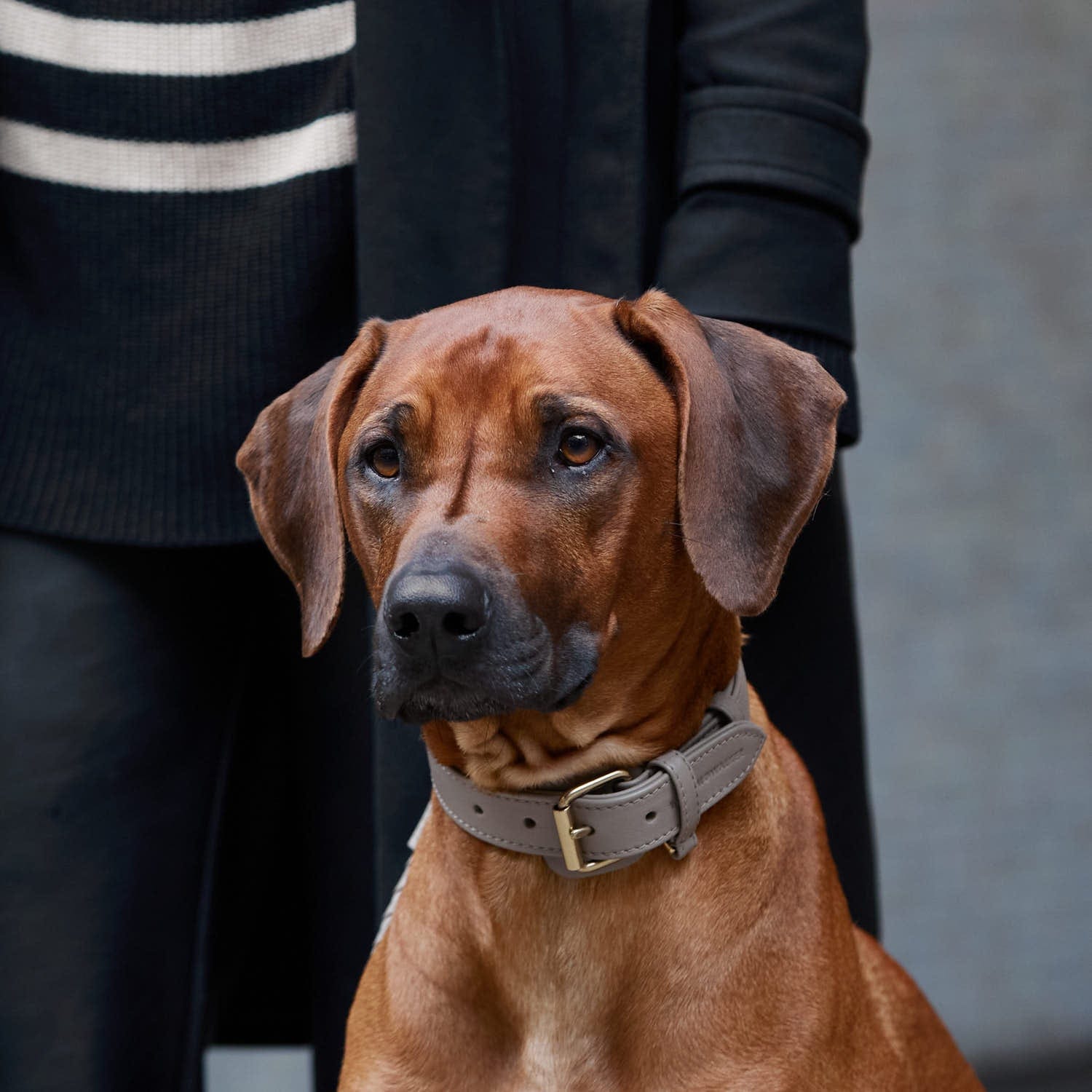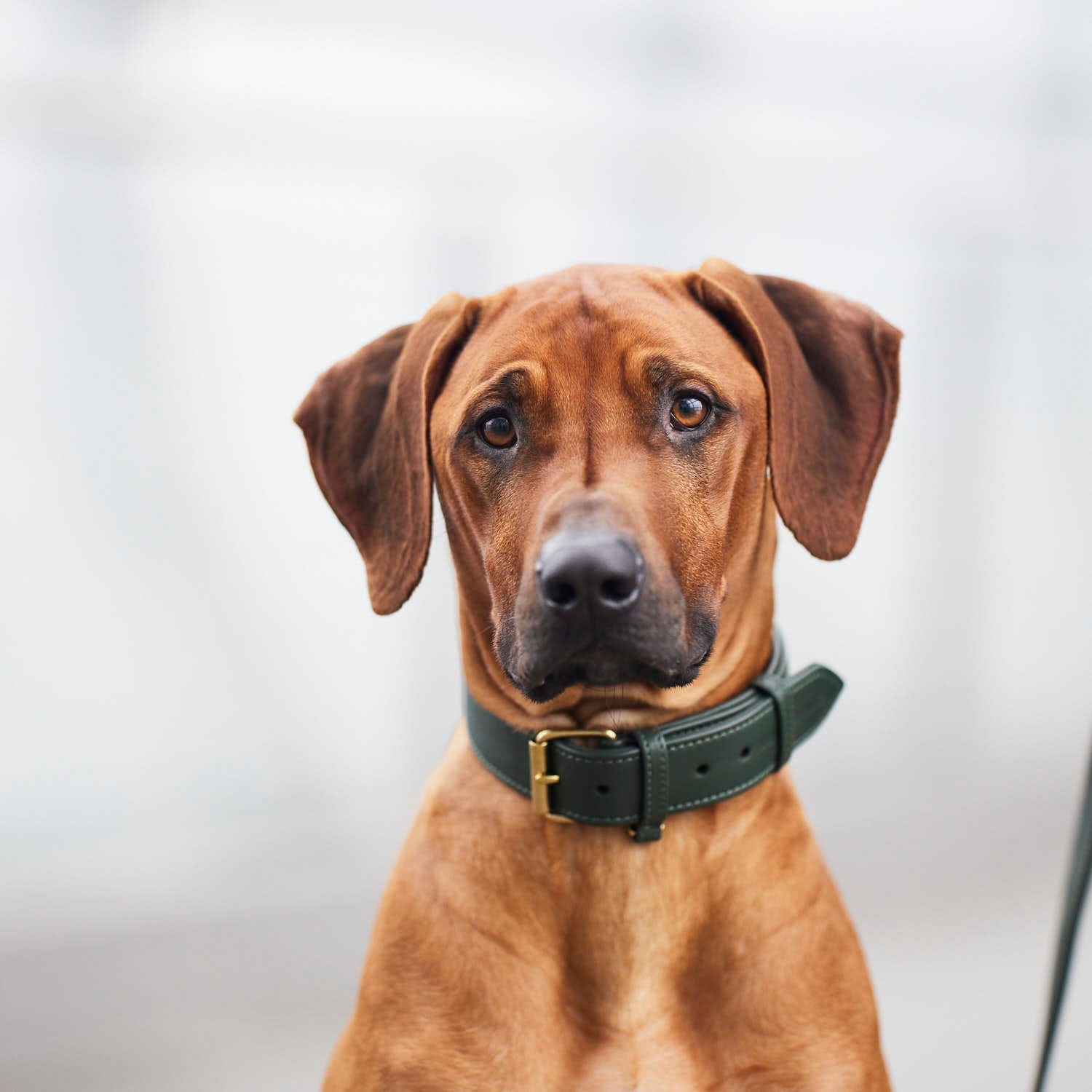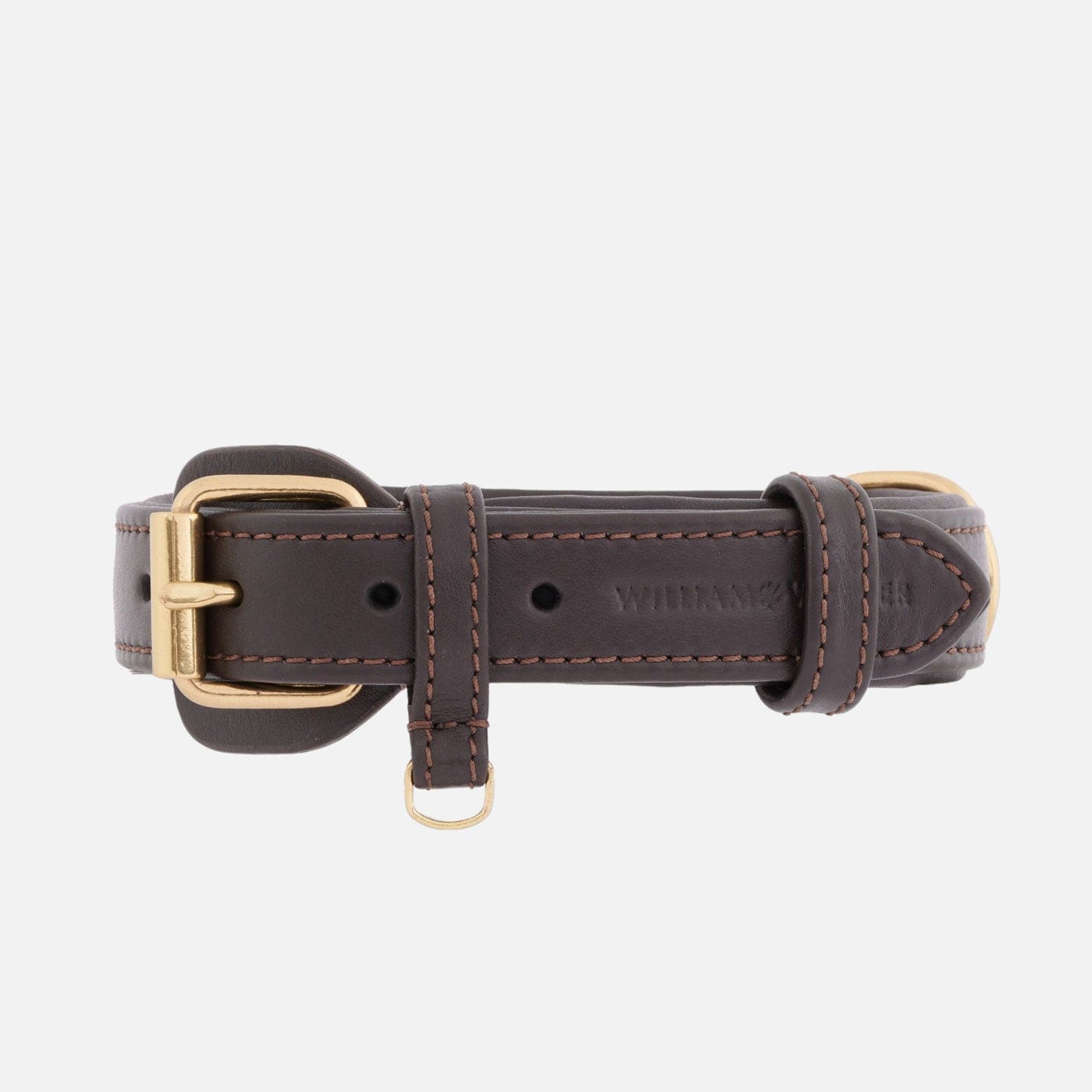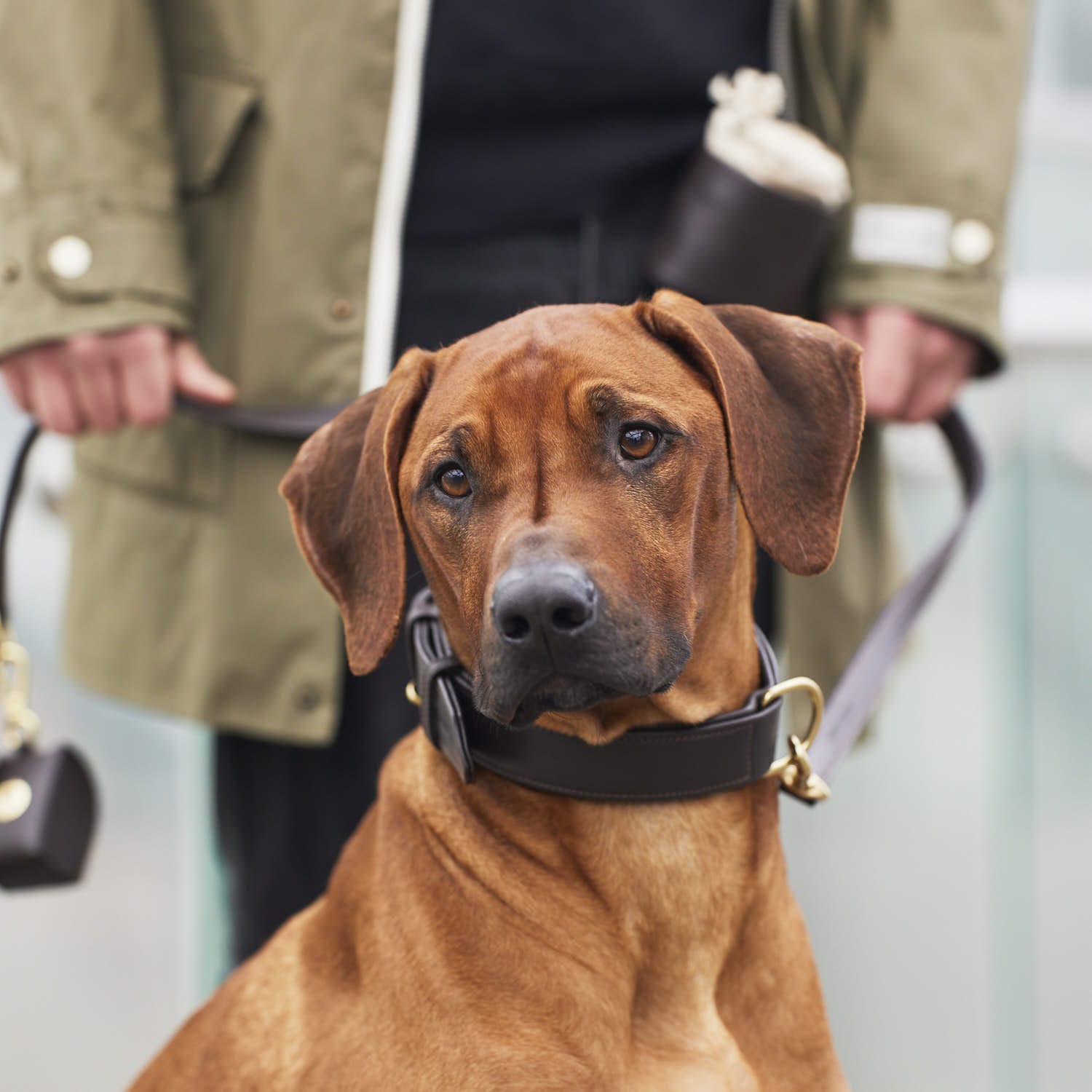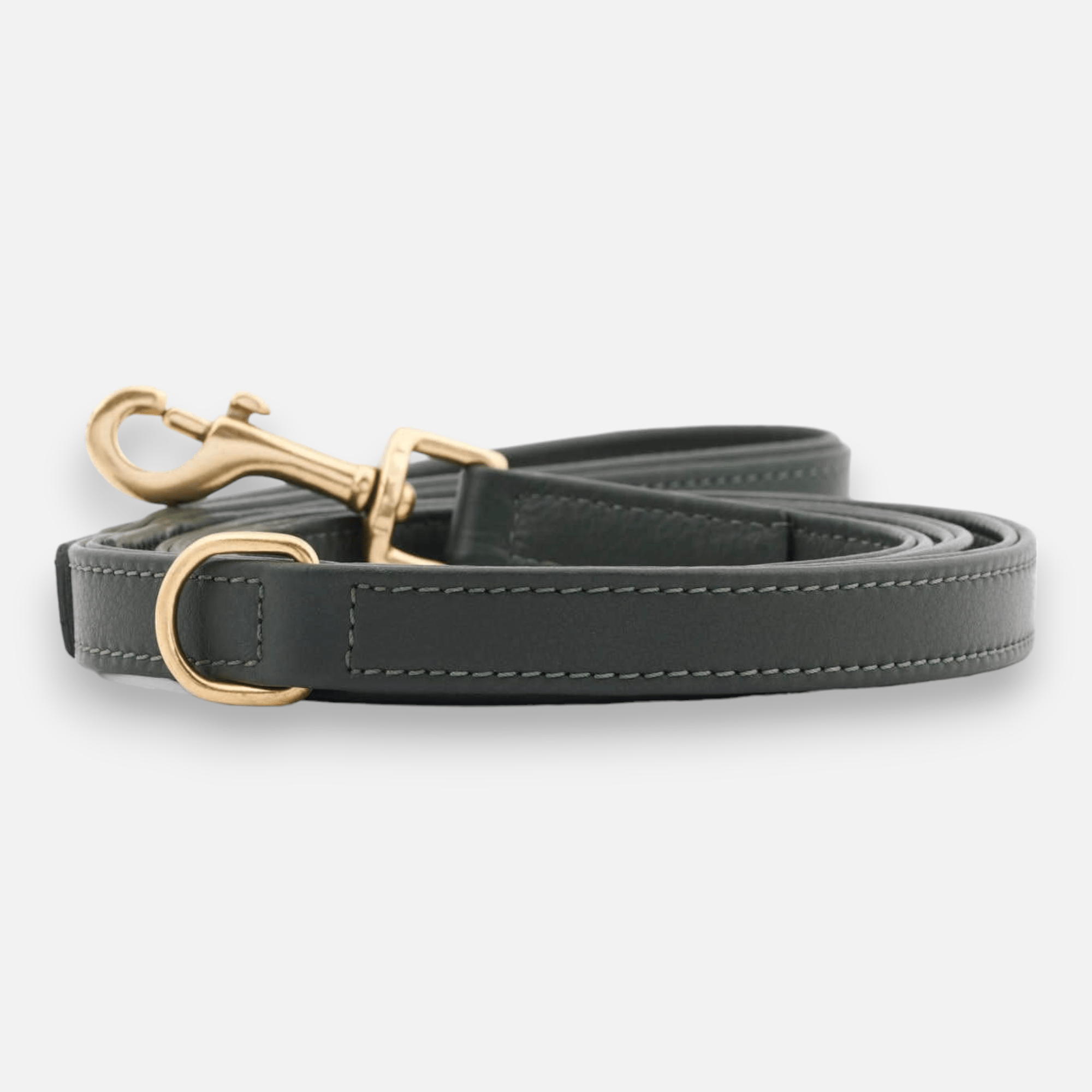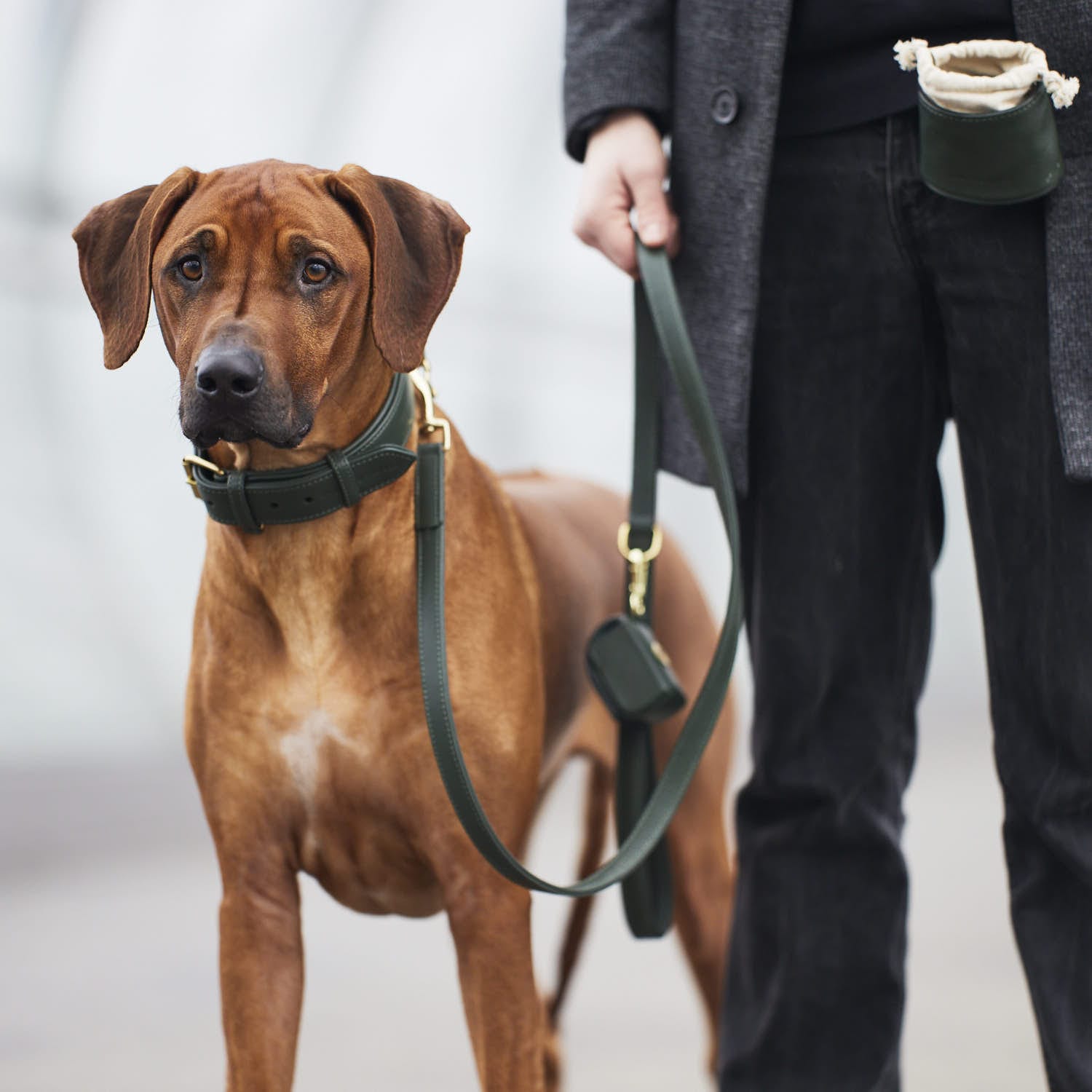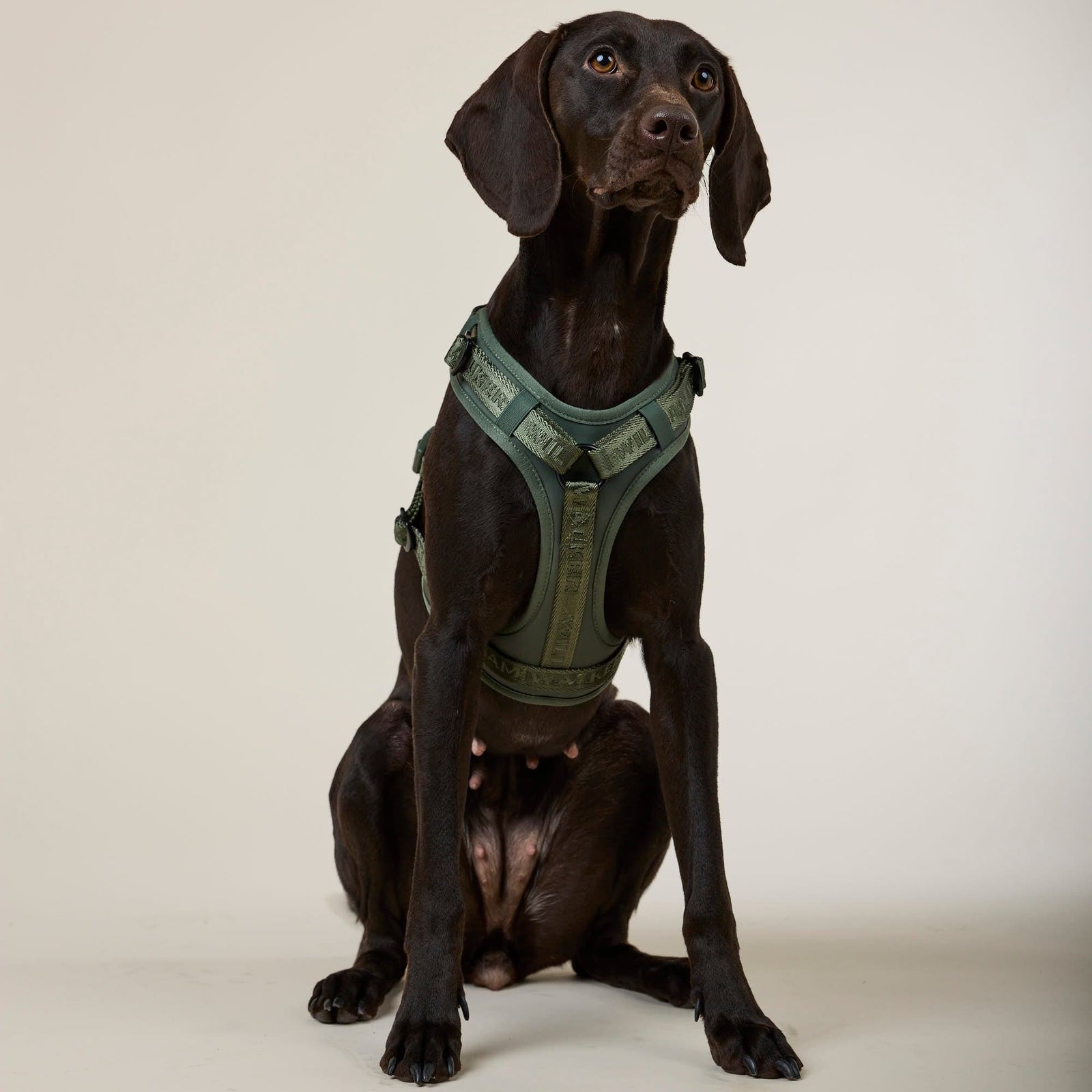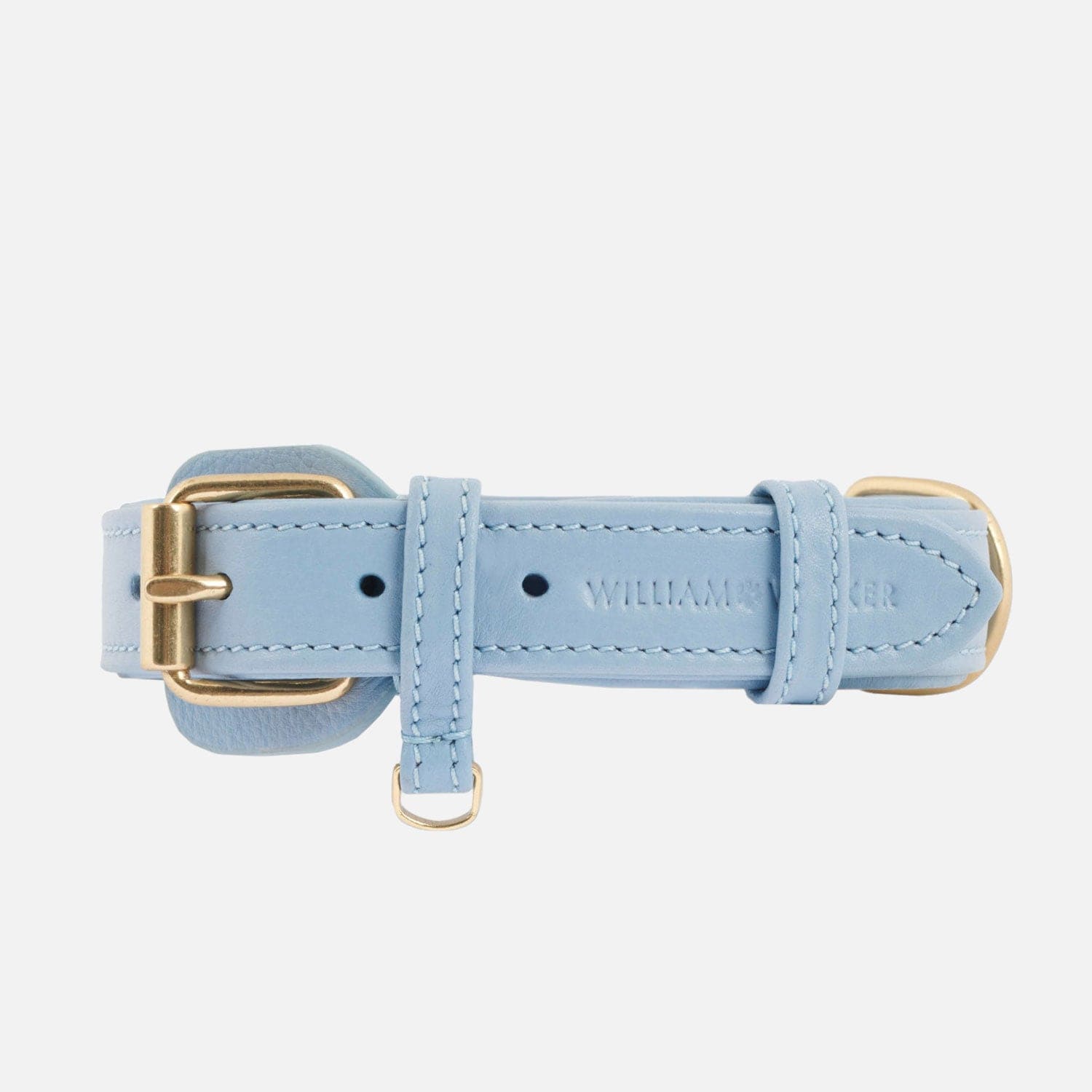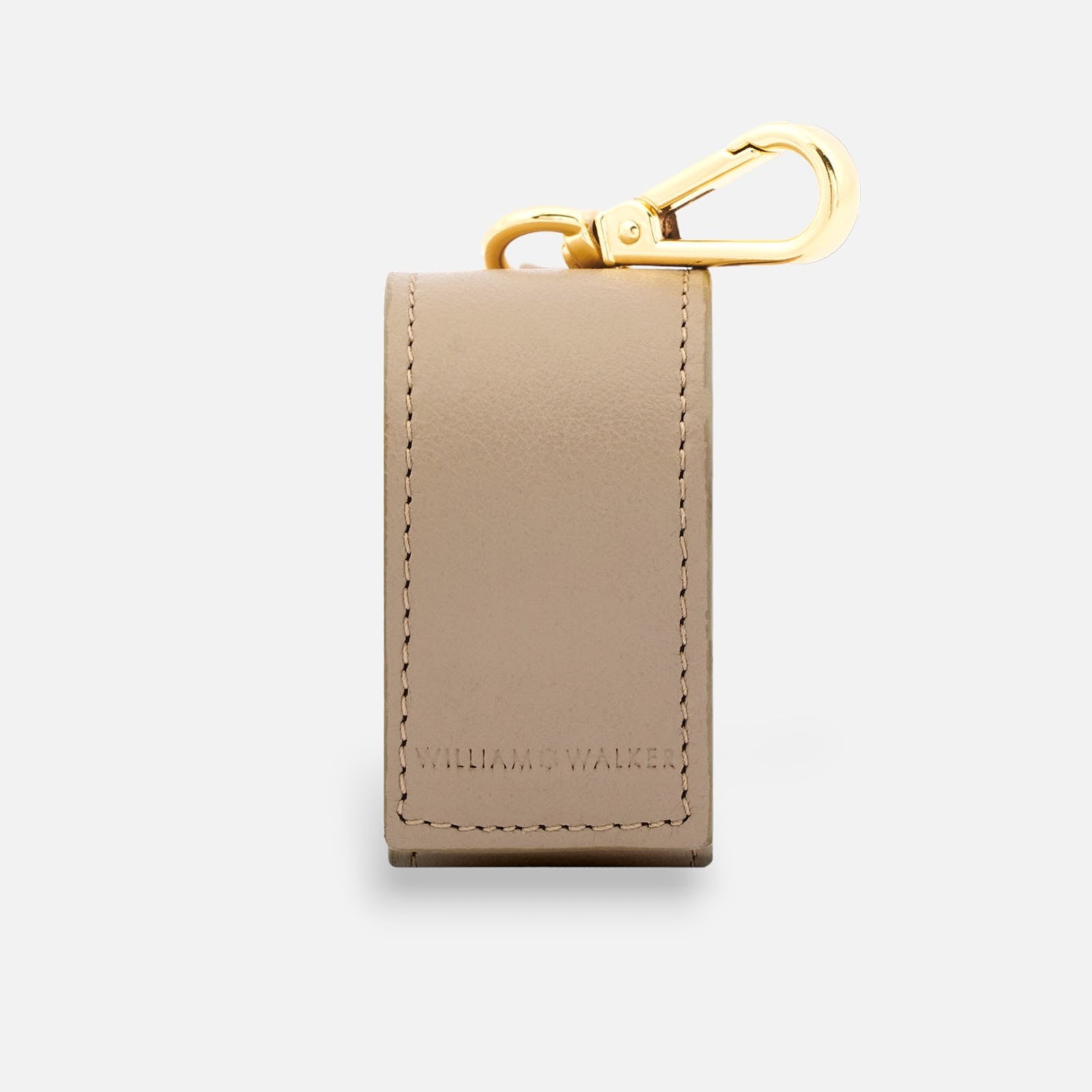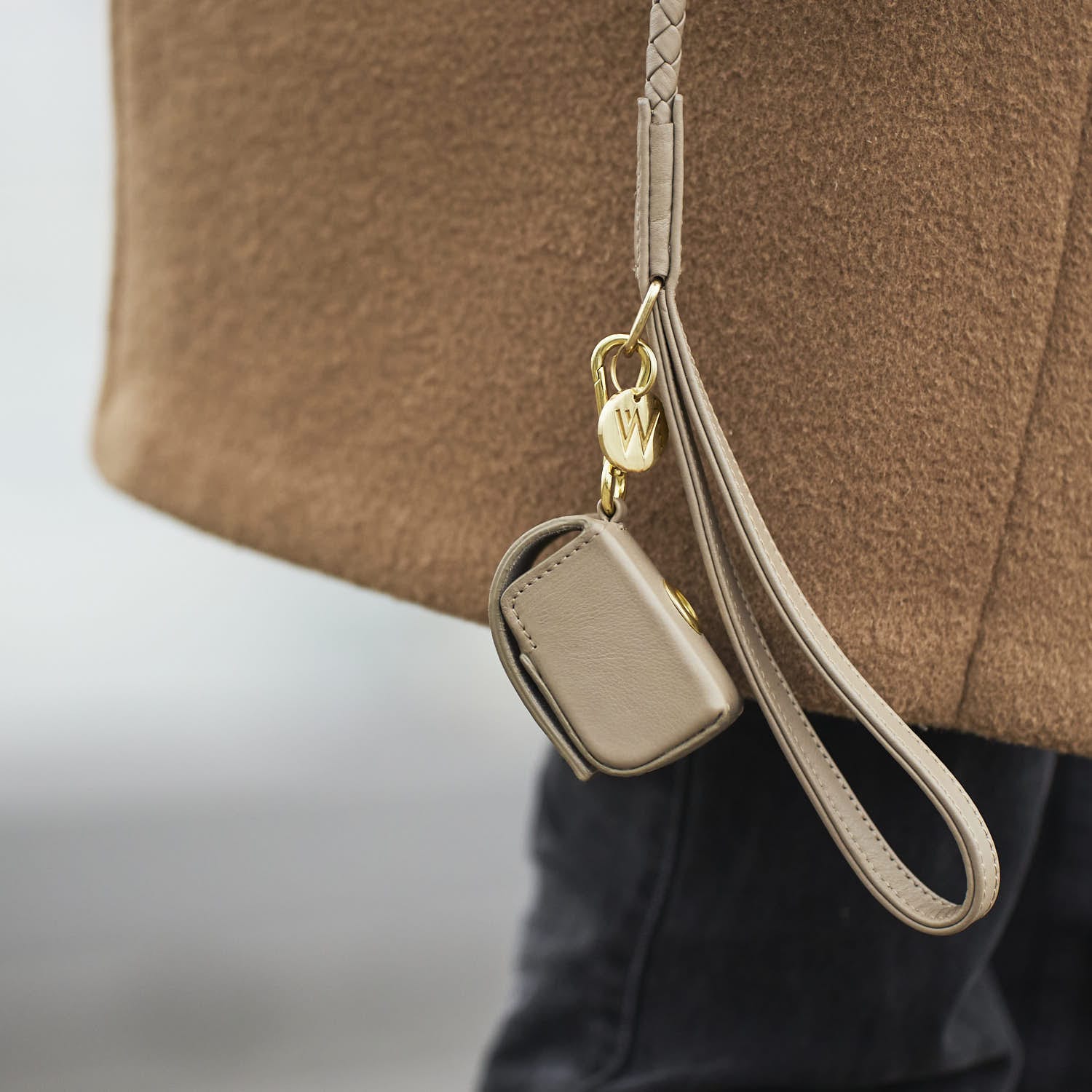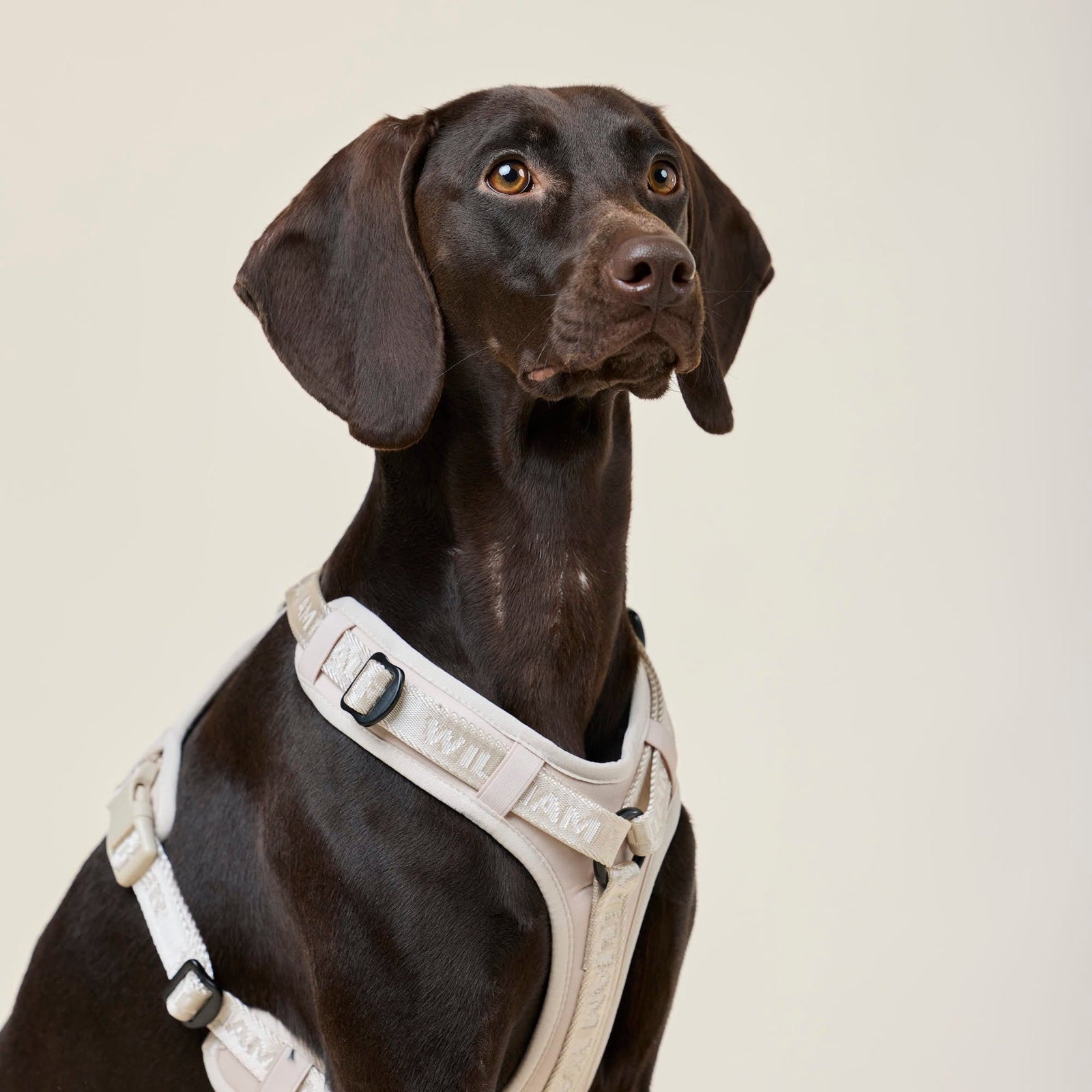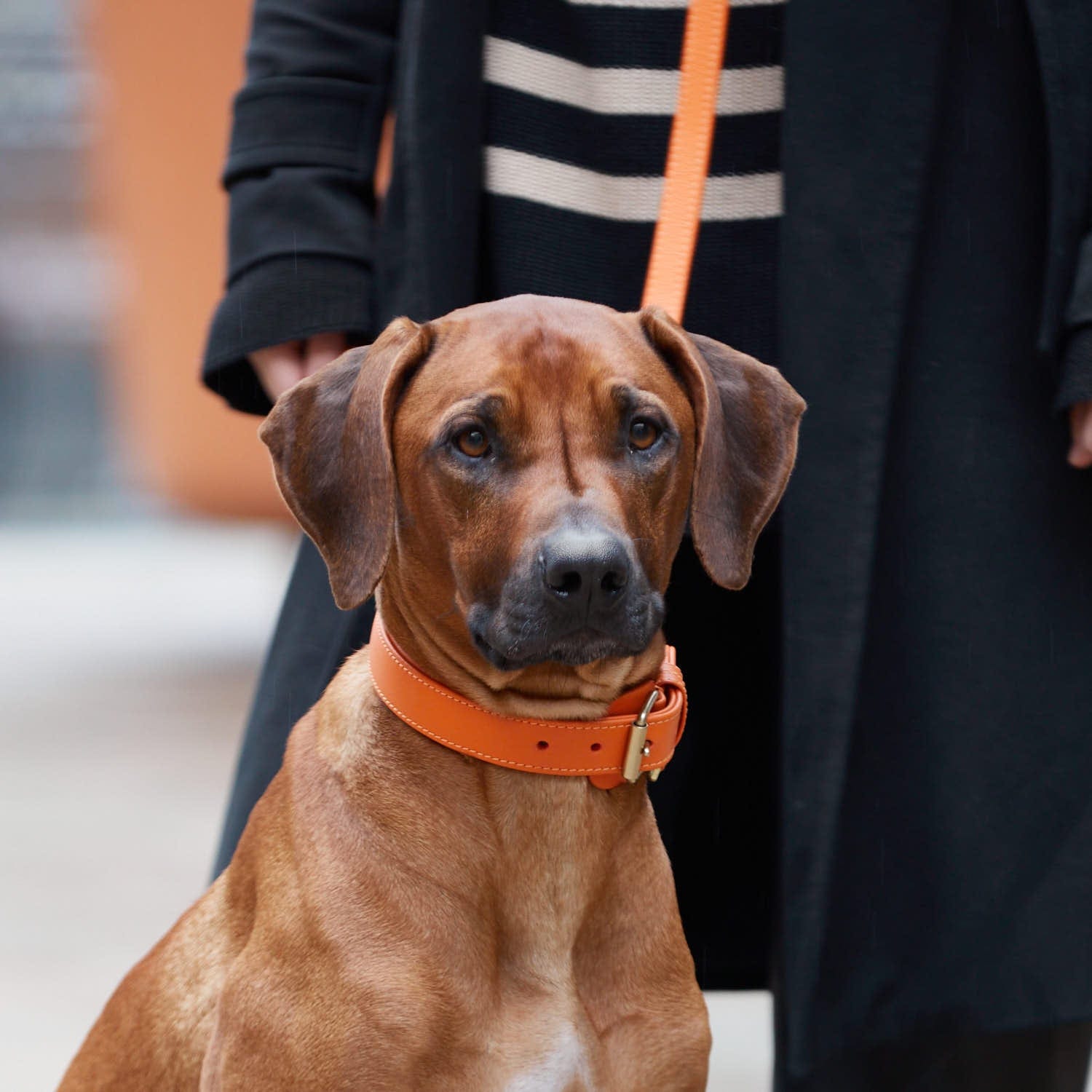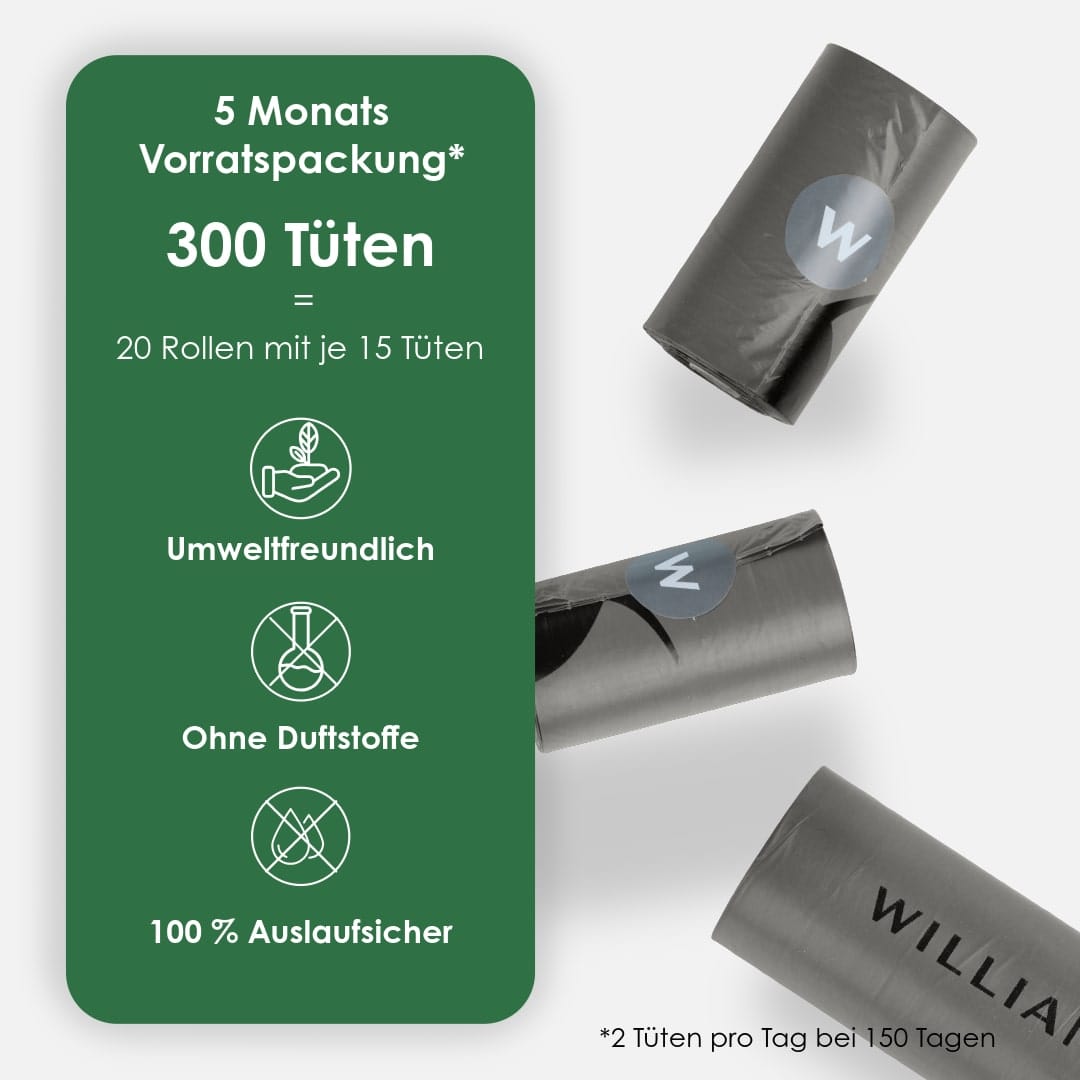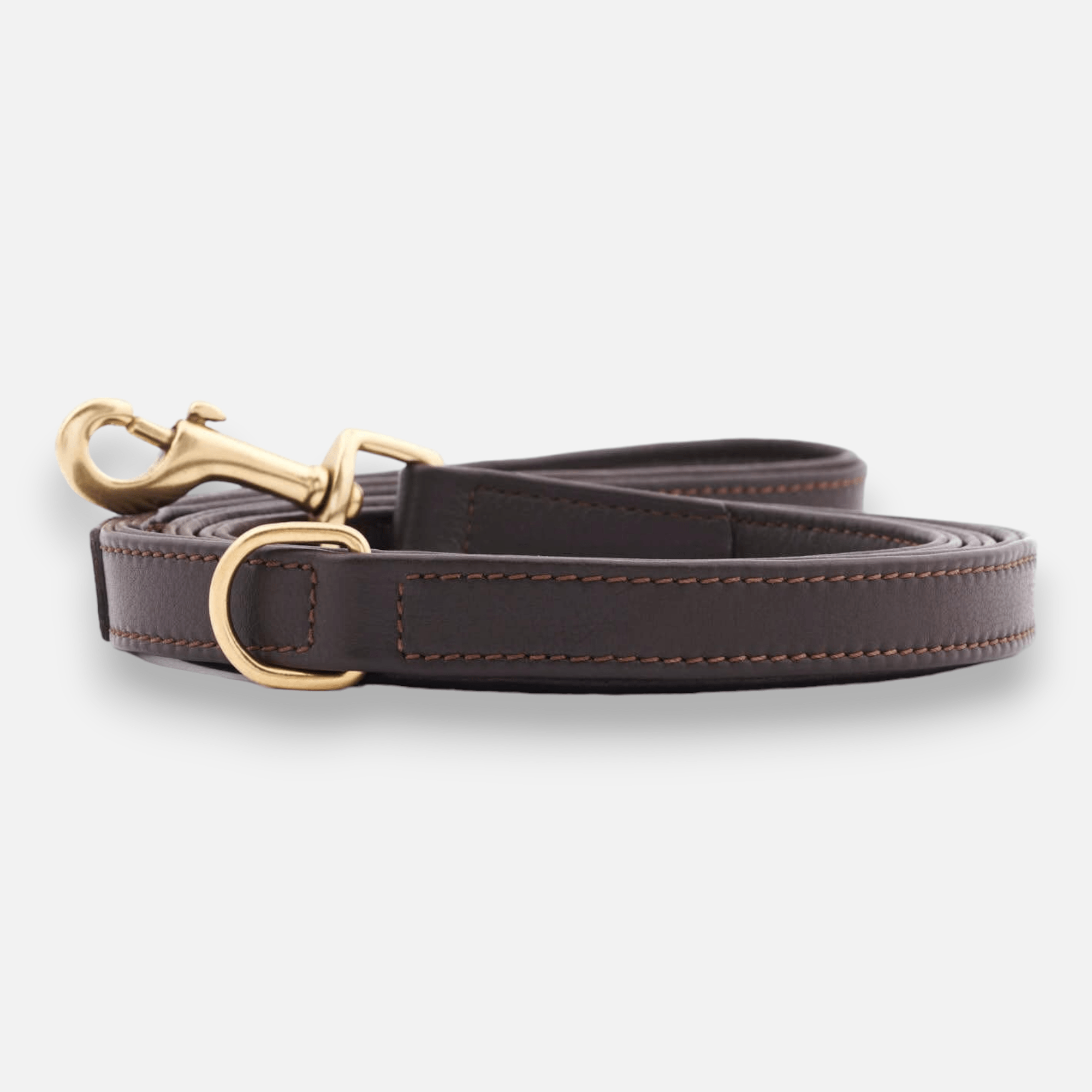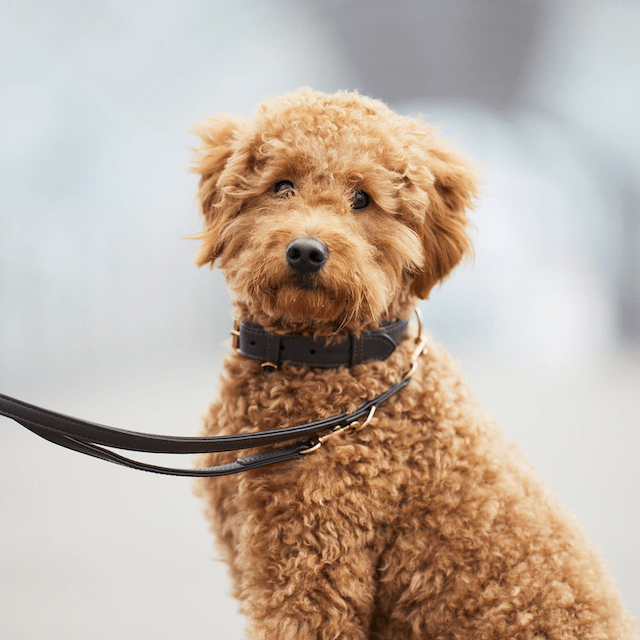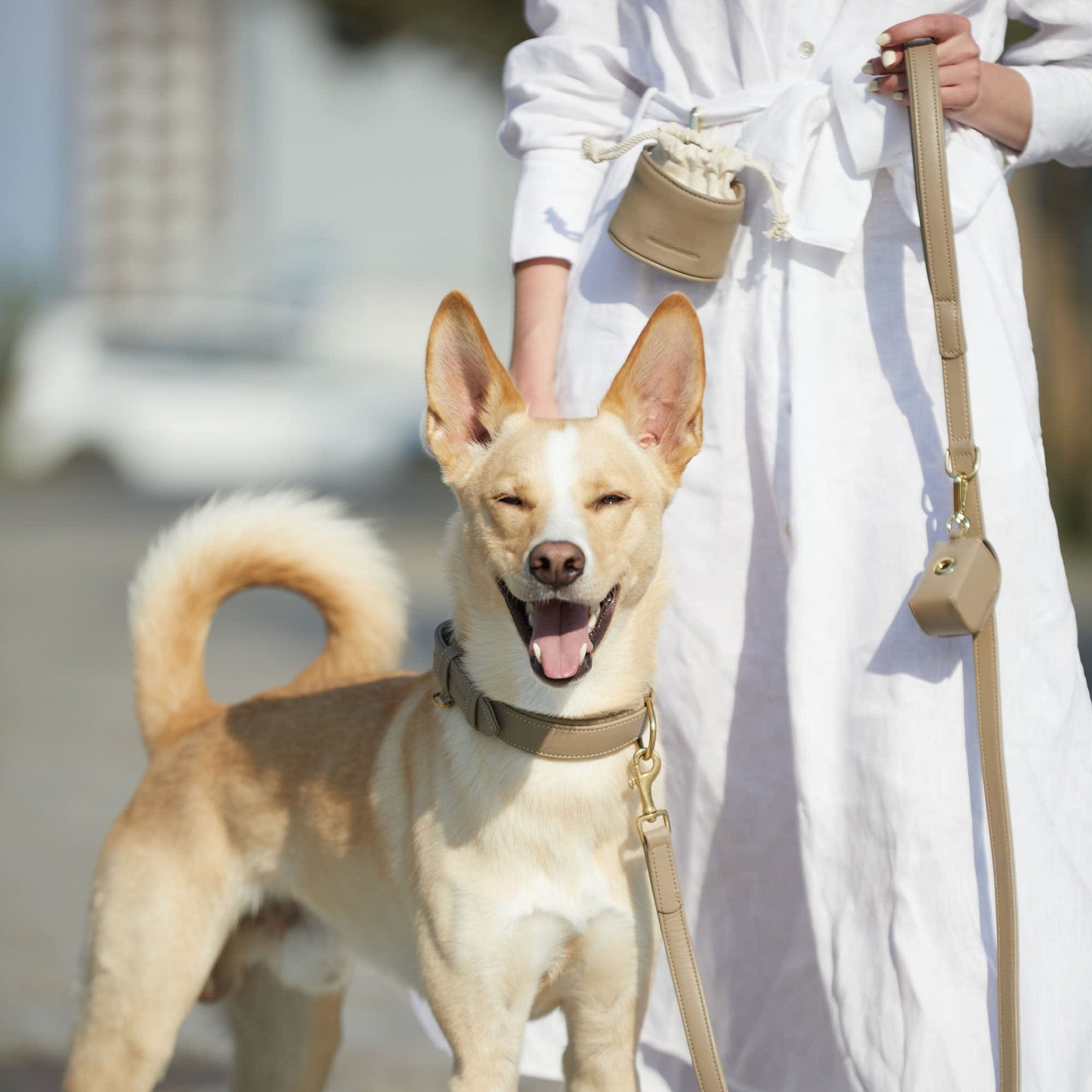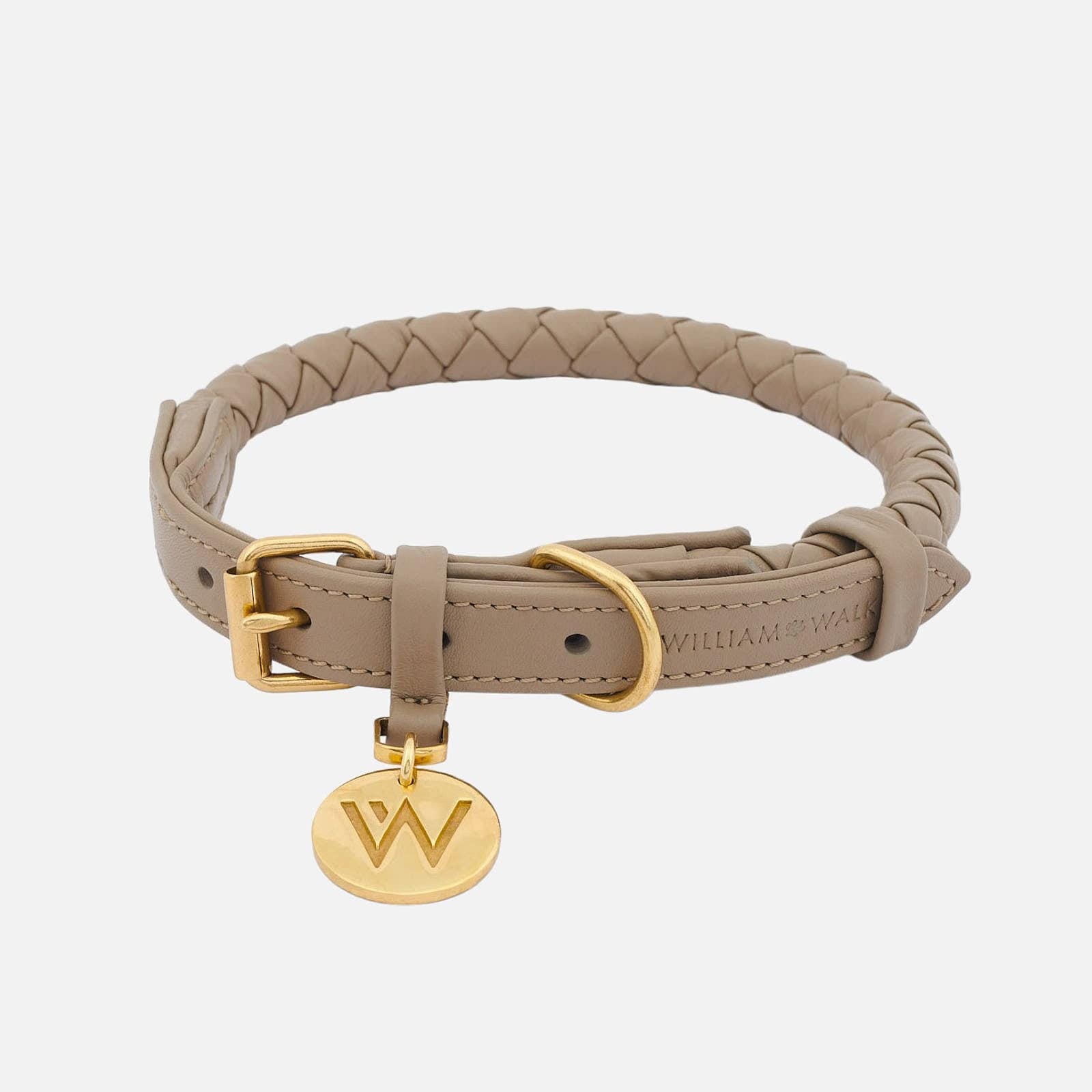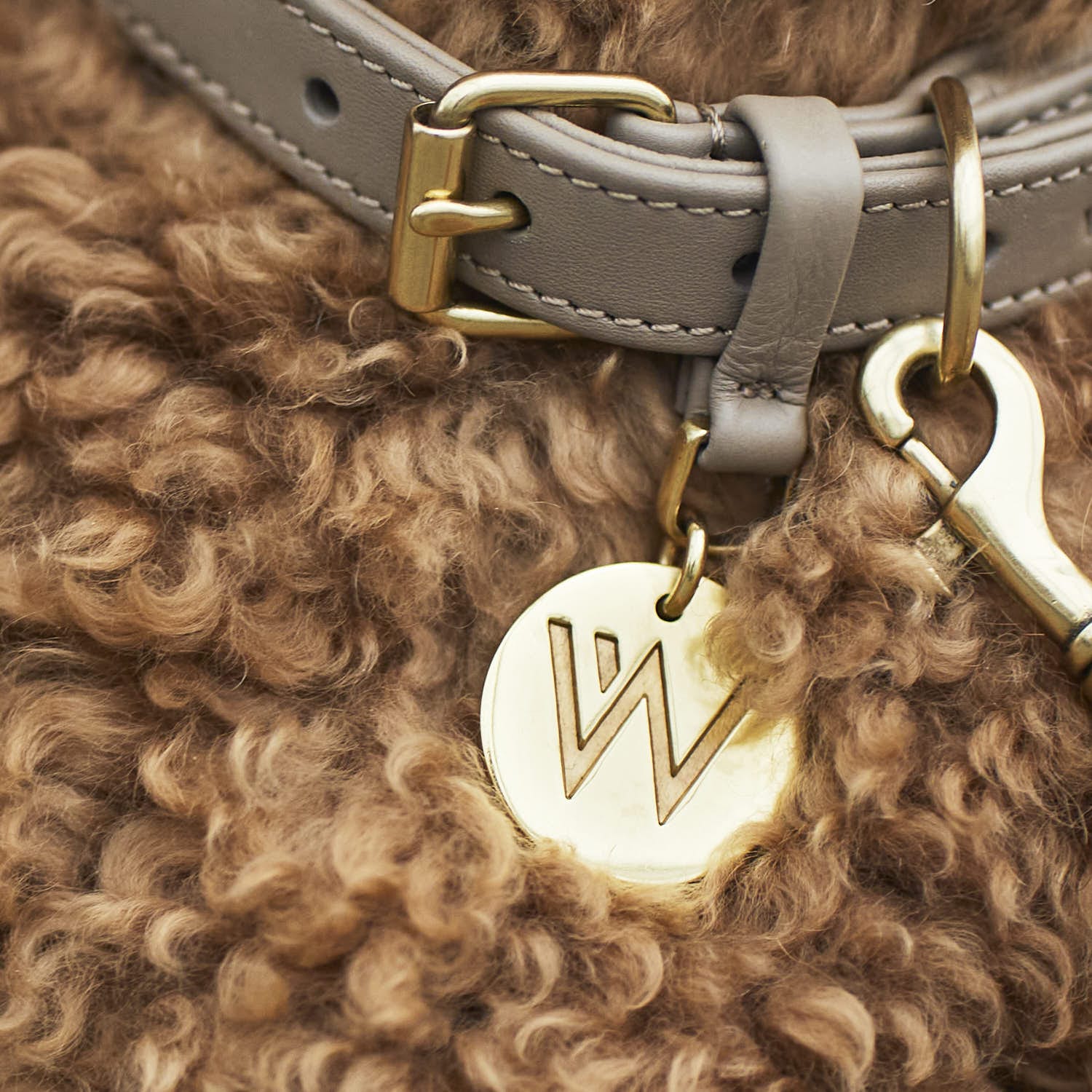The dog's coat is so much more than just for preventing the dog from the cold. It protects the sensitive dog skin from parasites, diseases, dirt and UV radiation. It has a natural protective layer that consists of the body's own fats and wraps itself around the individual hairs like a protective fat coat. But the dog's coat is also a mirror of its general condition. If we perceive the coat as smelly or greasy, then something is wrong.
Mostly coat problems are caused by nutrition. Diseases and stress also manifest themselves in dog fur. Unfortunately, these problems cannot be washed away permanently, but require research, observation or a visit to the vet. Shampoo, also special dog shampoo, can destroy the protective layer of the coat in the long run. So the highest commandment applies: Wash your dog as rare as possible with hygiene products. Of course there are exceptions. Skin diseases such as allergies and hot spots can often be treated well with appropriate dermatological shampoos. If the dirt is so stubborn that a bath with dog shampoo is necessary, it is always worth investing in a high-quality, natural and moisturising product. Oil-based dog conditioner or the subsequent care with coconut oil is also super important to support the natural fat layer of the coat after cleaning with shampoo. We at William Walker have worked intensively on the creation of care products that are ideally suited to the properties of dog fur and gentle on sensitive dog skin. With the William Walker Care Series we focus on high quality and above all natural ingredients. With good products, a lot of patience and the following tips, your dog wash will also be a success for you and your four-legged friend.
Brushes
Thousands of years of breeding with dogs have had an influence on the coat characteristics and nowadays it is necessary to support the animal coat care by human hands. Brushing and grooming is so important. It helps your four-legged friend to change coat, stimulates the blood circulation of the dog's skin and thus promotes the reproduction of the protective coat film. So you should always start your animal spa day with brushing or grooming. There is a wide range of products available and there is something for every type of coat. For dogs with an extremely large amount of undercoat, brushing may take 20 to 30 minutes. Most dogs find this very pleasant. If this is not the case, you should try it with an animal hair glove. The pimples are much shorter than with a brush and the hand-like shape gives your dog a familiar feeling. These gloves are also perfectly suited for massaging the dog's skin. You can find the coat care gloves on Amazon and in all pet markets.
Stress-free dog washing
If brushing and grooming has not completely removed dirt, your dog will probably not be able to avoid a bath. Not everyone likes to be washed. Especially the slippery floor of bathtubs and showers are scary for many dogs. If it is somehow possible to spare a frightened or water-shy dog the stress, you should do so. Often it is enough to rub the dog with a warm, towel and then brush it again. If the dog does have to go into the bathtub or shower, you should definitely place a towel or an appropriate anti-slip underlay on the floor. Bath-scared dogs tend to tense their muscles and due to the stiffening they slip much more than a relaxed dog. Talk to your furry nose, praise it and hand out plenty of treats. Shower your dog off with a gentle stream at a warm temperature. Massage his body with a special dog shampoo, e.g. William Walker Sensitive Dog Shampoo Pure, until it foams really well. In order to protect the environment and your dog's nerves, you should turn off the water while doing so. Finally, the shampoo must be washed out thoroughly, as residues can lead to dry skin and dandruff. Keep your dog's ears, eyes and muzzle free of dog shampoo. Finally, the William Walker Sensitive Dog Conditioner Smooth provides ideal combability and supports the natural protective film of the coat. Simply massage into clean coat after washing, leave on for a short time and rinse. Done.
Dog fur - aftercare
The appropriate care after the dog wash is essential. If the fur remains wet, your four-legged friend can catch a cold very quickly. Short-haired breeds like boxers or bulldogs, which have very little undercoat, often start to freeze even at room temperature if the coat remains wet for a long time. It is recommended to brush the coat properly and to rub it dry with a towel. If your dog has no problem with this, a carefully applied hair dryer will help quickly. But, as I said before: Enough distance between dog and hair dryer is important. It must not be too hot and not too loud for your pelt nose - so it's best to set the quietest and coolest setting on the hair dryer. A treat here and there not only makes the procedure easier for you, but also pleases the clean dog. But, as I said before: Enough distance between dog and hair dryer is important. It must not be too hot and not too loud for your fur nose. To protect your dog and to delay the next wash as long as possible, it is worthwhile to additionally support the fat layer of the coat with some coconut oil. The vegetable fat not only smells wonderful, but has also proved itself both externally applied and as a food supplement working from the inside, as a tick prophylaxis. Coconut oil is also suitable for the care of sensitive paw pads - or you can use William Walker Paw Care Paw Balm, which contains organic coconut oil and many other caring oils and fats.
The right care for sensitive areas
As the facial area of the dog should not be cleaned with shampoo, we recommend using special wet wipes. Simply wipe the ears carefully with the wipes provided for this purpose - e.g. the CLX Wipes by ICF are suitable. For very sensitive dogs, it is recommended to first apply coconut oil to the ears with a soft cloth and then and gently wipe the ears with a warm cloth - because for many dogs it is not the wiping of the ears that bothers them so much, but the contact of the sensitive skin of the inner ear with cold. The snout can be cleaned with warm water and the antibacterial fat of the coconut, just like the ears. With wrinkled dog breeds, such as the bulldog, it is extremely important to take care of the area around the eyes. The eye crease accumulates tear fluid - causing inflammation, redness and unpleasant odours. For bacteria this warm and unventilated eye wrinkle is an ideal place to thrive and breed. Only warm water and natural fats should be used to clean it. If the dog tends to watery eyes, the eye wrinkle must be dried at least once a day. Keeping this sensitive area around the eyes dry is very important. To do this, carefully wipe out the wrinkle with a dry, soft cloth. Zinc ointment heals slight inflammations and supports the keeping of the eye wrinkles intact. Last but not least, it is always worth taking a look at the dental hygiene of your four-legged friend. There are special chewing articles, but also dog toothbrushes and toothpaste. The all-rounder, coconut oil, can also be used wonderfully as a toothpaste, because most dogs love the taste of the fat and so they release their little bites more easily. If the dog has survived its spa day well or even enjoyed it, a big praise should not be missing.
We hope that our tips will help you and make the next dog wash a little easier. If you have any suggestions or further tips about dog hygiene, please leave us a comment here.
By Louisa Knoll
